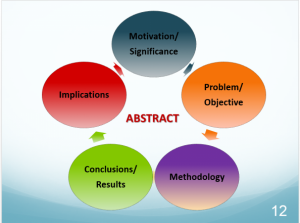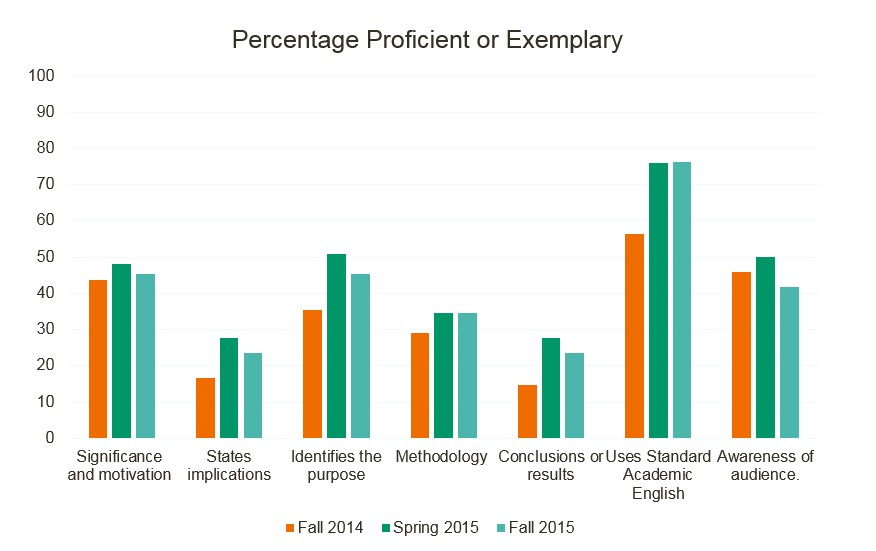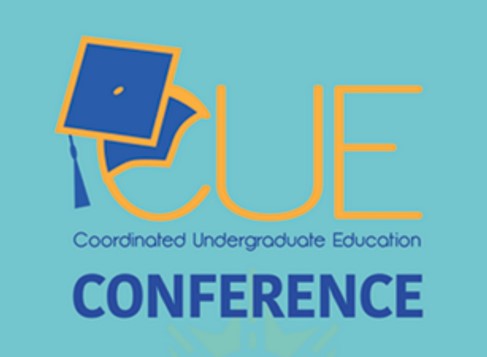A note to the reader: I am a Writing Across the Curriculum (WAC) fellow at New York City College of Technology (City Tech) for the academic year 2024-2025. One of the requirements of the fellowship is to contribute a blog post per semester on the Open Lab. I posted mine on Friday October 25, 2024. It was called: “To End Zionism and for a Free Palestine: How Do We Do ‘Very Effective’ Writing?” The following Monday however, my blog post was taken down because the City Tech administration evaluated that it was “outside the scope of content specified for blog posts in the WAC Fellows Handbook.” An email exchange ensued, with the conclusion that I was “free to resubmit a blog post that is within the scope of the assignment.” To this end, you will find below the initial blog post a new submission (“Addendum: what this has to do with WAC“) which places the issues at hand in conversation with WAC principles and teaching writing in the (CUNY) classrooms. I am very grateful to my friend and comrade A. formidable scholar of composition and rhetoric, who shared their expert feedback on previous drafts.
To End Zionism and For a Free Palestine: How Do We Do ‘Very Effective’ Writing?
October 25, 2024
Seventy-six years into the colonization and ethnic cleansing of Palestine, and a year into what legal scholar Maryam Jamshidi has described as an “exceptional display of annihilation that other genocidaires could only dream of,” the Israeli army, with the full financial and diplomatic backing of the United States, further reinforced its barbaric siege on the Palestinian people living in Gaza. Journalist Hossam Shabat reported: “what’s happening in the Jabalia refugee camp can be summed up as a rapid extermination mission; we have never seen anything like this.” As I write this, the Israeli army is rounding up dozens of Palestinian men, with their hands tied and blindfolded — they will be buried alive or join the approximately 10,000 Palestinians in Israeli jails and be subjected to torture, organ theft and rape. The fact that the Palestinian people are still standing on their land is a testament to their steadfastness.
This blog post is part of a series of reflections authored by doctoral fellows at New York City College of Technology on teaching writing to CUNY students. As a Writing Across the Curriculum (WAC) fellow, I am responsible for improving the writing skills of CUNY undergraduate students. The WAC program organizes workshops with faculty to share best pedagogical practices and workshops with students to help them write strong and well-rounded arguments supported by evidence. But when the earth-shattering horrors in Gaza make the heart break a hundred times a day, when depraved monsters celebrate the killings of heroic fighters, when the mainstream media broadcast genocidal propaganda, and when our very own university represses and brutalizes the students who protest that genocide, it is tempting to be skeptical: what could a pen and paper possibly do? Admittedly and to paraphrase Leila Khaled, writing “doesn’t liberate land.” Khaled who was in fact asked about the Boycott Divestment Sanction (BDS) movement recognized its effectiveness: “BDS, of course, on the international level it is very effective. But it doesn’t liberate, it doesn’t liberate land. If there’s BDS all over the world, and the people are not resisting, there will be no change.” Could the same be said about writing? The task at hand for us, academics, graduate students, writing fellows, is to figure out how to do “very effective” writing, and how to put it to good use, hoping that we remain loyal to the martyrs.
CUNY for Palestine, a solidarity group of students and workers organizing for Palestinian liberation at the City University of New York, recently invited Professor Rabab Ibrahim Abdulhadi of San Francisco State University to give a talk “One Year Since al-Aqsa Flood: Reflections on a Year of Genocide & Resistance” at the CUNY Graduate Center – a talk that had previously been censored by Wake Forest University. Professor Abdulhadi’s talk offered historical elements to locate the attacks of Al-Aqsa flood of October 7, 2023, within the long and proud tradition of indigenous resistance to settler colonial occupation and described the apocalyptic scale of the ongoing US-backed genocide of the Palestinian people [1]. Throughout her remarks, Professor Abdulhadi also shared a few personal anecdotes: among those was the story of a younger Rabab Abdulhadi – not yet the award winning and widely read university professor – who wanted to take up arms and join the Palestinian resistance but was told by her elders that she would serve the resistance better if she stayed far from the frontlines and firearms. Rabab Abdulhadi followed that advice and became a writer and an educator with a scholarship deeply grounded in the material needs of the Palestinian liberation struggle. Revolutionary writing has always been an essential part of liberation struggles. The writings of Palestinian scholars from Ghassan Kanafani to Basel Al-Araj to Rabab Abdulhadi both narrated and strengthened the resistance because the analysis wasn’t intended “as academic exercise or to fill a gap in the literature […] its real value is in its potential to transform the way we look at, and interpret, the world around us.”
I can’t know for sure why Professor Abdulhadi shared that story of her younger self, but one thing it did for her audience of CUNY students and workers is to immediately raise the stakes of our academic work, here in New York, in the belly of the beast. If we weren’t going to fight the settlers that occupy Palestine, we should at least try to write something useful. As we salute the courage of the resistance fighters defending their people on the frontlines, we who are not sacrificing our lives in the struggle for liberation, and have made a living of producing academic scholarship, must take our writing seriously.
The goal is to sabotage the fabrication of that liberal veneer that transforms settler colonialism and genocide into glossy academic talking points [2]. As university workers we write articles, books, conference papers, syllabi and assignments, occasionally department statements and union resolutions, which together help sustain the myth of the university as a great producer of knowledge, a champion of learning and democratic debates. At CUNY this myth is particularly easy to dispel because our university has partnered with Zionists organizations and received funding from Zionist policymakers. The claim that CUNY builds knowledge “for the public good” only stands if one leaves the humanity and dignity of the Palestinian people out of the equation. And so, it’s a moral duty to figure out how our work (and for me here, our writing) fits into that system, even more so because CUNY directly collaborates with the U.S. and Israeli institutions that have caged in Palestinians without food or water, have relentlessly targeted them with terror airstrikes, and have burned down hospitals. It is a moral duty to figure out how our work (our writing) can unequivocally support the resistance against Zionism, so that the children of Palestine can grow up free, and in the words of the martyr resistance leader Yehia Sinwar, “be safely Palestinians, so that they can be much more than Palestinians” — in an interview published in the Italian newspaper La Repubblica on October 4, 2018, the journalist asked Sinwar what kind of life he hoped for, Sinwar replied: “ I want my kids to dream of becoming doctors not to treat only the wounded, but cancer. Like all the kids of the world. I want them to be safely Palestinians, so that they can be much more than Palestinians” [3].
Endnotes:
[1] The talk was not recorded, however a separate event titled “One Year of Genocide in Gaza: Dispatches from Palestine & Lebanon,” a panel conversation hosted by Professor Abdulhadi on Oct 10, 2024, is available on YouTube.
[2] See for instance: Chatterjee, Piya, and Sunaina Maira, eds. 2014. The Imperial University: Academic Repression and Scholarly Dissent. Minneapolis: University of Minnesota Press; Edwards, Erica R. 2021. The Other Side of Terror: Black Women and the Culture of US Empire. New York: New York University Press.
[3] For an English version of the interview, see journalist Francesca Borri’s Facebook page: https://www.facebook.com/francescaiaiaborri/posts/yahya-sinwarinterview-with-the-leader-of-hamas-in-gazafrom-la-repubblica-italy-o/1954610794582074
Addendum: what this has to do with WAC (a response to City Tech administrators)
Jan 24, 2025
The question in the title of the original blog post (“how do we do very effective writing?”) is a common starting point in Writing Across the Curriculum (WAC) conversations. WAC pedagogy at its core is about centering writing in the classroom with the understanding that students who engage in consistent and repeated writing activities are more likely to deepen their understanding of the course materials. WAC workshops and certifications equip educators with pedagogical strategies so they can move away from the model of the lecture-based class and instead incorporate writing activities in their classes (of different lengths, scopes and levels of difficulty) throughout the semester.
For the WAC movement, “effective writing” happens when students “write to learn.” John C. Beans’s Engaging Ideas, citing writing theorist Peter Elbow, makes the case for writing “not as a way to transmit a message but as a way to grow and cook a message.” His book describes a wide range of writing activities for educators to adopt so writing remains frequent and enjoyable (for varying audiences, with different purposes and stakes, and within different genres). WAC promotes a pedagogy of iteration, revision, and interaction. Foundational to WAC is the principle that teachers must approach writing as a process (keywords are scaffolding, exploratory writing, free writes, low stake assignments, peer-reviews, revision) instead of teaching writing as a product.
Departing from this perspective, the above blog post was an invitation for college educators to consider that their own writing and their students’ writing are still a product. Colleges and universities are institutions actively participating in the capitalist, settler colonial, genocidal U.S. economy (see for instance Kannan et al.; Bousquet et al.; Hubrig; Kareem from the field of composition studies, but also Wilder, Mahadeo, Bradley, hooks, Ferguson and more from across the disciplines). When students and professors write, their writing is part and parcel of a wider enterprise that culminates with the university’s outputs: cultural and political discourse (CUNY calls it “being at the center of the conversation”), data analysis and policy recommendations (“knowledge as a public good”), as well as a trained workforce for City and State employers (“New Yorkers from all backgrounds with in-demand skills”).
At a time when CUNY’s claim to serve the people has been shattered by its blood-soaked commitment to stand with Israel’s genocide, I wrote this blog post to ask how our writing fits into that system. Specifically, I considered the possibility that WAC-infused pedagogical spaces with their emphasis on “writing as a process” have obscured the very material effects of our writing and our students’ writings on the world. Nothing new here. Many (Maraj; Kynard; Alexander and Jarratt) have noted how institutionally vetted pedagogical spaces on campus are unconcerned with (and maybe strategically obfuscate) students’ writing because of the fear it might be revolutionary and “transform the way we look at, and interpret, the world around us.” To bring it back home: when City Tech students write flyers, banners, and social media posts (and more) in beautiful prose, presenting evidence and with a compelling thesis statement, to call out their administration and demand CUNY divest from settler colonialism and genocide, their writing isn’t featured on the Open Lab website, they are targeted with repression and violent intimidation.
Writing scholar-administrators like LaGuardia Community College’s Dominique Zino directly locate the project of WAC in the recent history of CUNY, suggesting that this history can inform writing instruction and administration on campus. In the late 1990s, CUNY students faced the brutal force of budget cuts, a scrapping of the Open Admission rule, and increased militarization of the campuses, i.e. reforms of austerity and abandonment targeting the Black and Brown working class student body. Mayor Giuliani and his appointees on the CUNY Board of Trustees led the charge with the racist and classist idea that CUNY was “an institution adrift” and in need of neoliberal transformation. Strategically, they embraced the white moral panic over the decrease in “academic excellence” (also known as “our students can’t write”). To address this fabricated crisis, college instruction was to focus on the “basic skills” of reading and writing. So in 1999, the Board of Trustees mandated that each college “intensify and expand its programmatic efforts to strengthen the teaching of writing in courses across the curriculum.” This was to be done with the assistance of CUNY Writing Fellows, advanced and specifically trained doctoral students that would assist in the development of Writing-Across-the-Curriculum programs on the campuses.
This terrible origin story requires that we (the CUNY writing fellows in question) think critically about the institutionalization of WAC at CUNY and its implications two decades later. My blog post drew inspiration from composition scholar-teachers like Aja Martinez, Eunjeong Lee, Sara P. Alvarez, Amy J. Wan, and Carmen Kynard (the latter three of whom are current/former CUNY faculty and/or writing-program administrators) who have observed how WAC and adjacent programs can function as norm-making spaces at the service of “raising academic standards” through the delineation of acceptable vs. unacceptable writing (the weaponization of writing pedagogy to control students).
This does not mean that teaching and learning writing at CUNY has always been unidimensional and hierarchical. There have been a multitude of counter-hegemonic initiatives to reclaim writing pedagogy from institutional capture. In fact, a call for papers for a 2025 special issue of The WAC Journal noted how WAC at CUNY predates and exceeds its institutional framework. Liberatory and community-oriented writing practices have shaped our institution throughout the 20th century, with CUNY undergraduate students at the forefront (see Zeemont’s The Act of Paper and Okechukwu’s To Fulfil These Rights). Recently, students and faculty have collaborated in shaking up entire WAC programs to make them anti-racist, multilingual, multi-generational, public-facing and accountable to the community (see the transformation of the WAC program at Lehman under the leadership of Vani Kannan). Oftentimes, these initiatives were met with administrative repression (see the recent censorship of the “Globalize the Intifada!” panel at a CUNY WAC conference). Taking inspiration from these efforts, I consider it is imperative that writing pedagogies at CUNY move toward practices that actively stand by the heroic Palestinian and regional resistance, who fight (in the words of CUNY alumna Fatima Mohammed) the “most advanced, immoral and lethal forces of the world.” My blog post was an invitation to locate the work we do at the City Tech WAC program within the ongoing struggles for a liberated Palestine that shape our students’ and colleagues’ lives as writers in and beyond the classroom.









